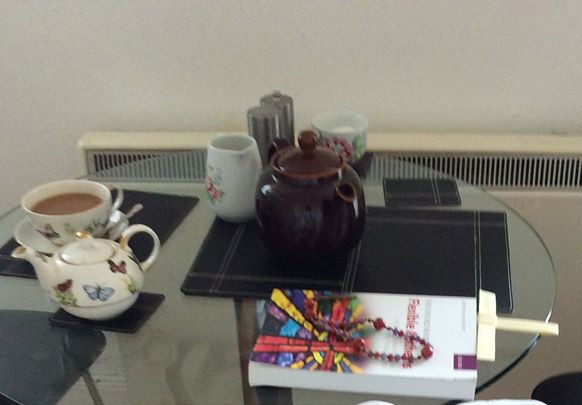We want to begin by stressing we are book-lovers. We love the smell of them, and the feel of them, and weight of them. We go to great lengths to preserve their spines out of a deep-rooted belief that to do anything less is Abuse of Book and on par with High Treason. We say all this because what follows is a defence of the kindle.
Every now and again someone will see us with ours and say, ‘I still like books.’
Or, ‘Don’t you think you remember less reading on a screen? Doesn’t it irritate you that it needs charging?’
There’s any number of arguments against the kindle, as there is against anything. But there’s a value too that we don’t think is lauded enough; it’s a godsend to the partially sighted. We’re just sighted enough that growing up, no one offered us large-print as an option until university. Preferably we read at size 16. But the number of books printed size 16? Our local library has perhaps ten large-print books together and they’re always Jilly Cooper. That’s not a condemnation, because we’ve never read her and know nothing about her books. There have got to be partially-sighted people in my town with less vision than us, who have read those ten books to death out of a lack of choice.
There are things like Daisy Machine, but we could write a whole other post on the evils of the Daisy Machine. Suffice it to say we could never make ours work, and like any 13 year old, refused to lose a Saturday afternoon to a class on how to use one. That’s why years later our Daisy is stuck at the beginning of Jane Austen’s Emma, though we’re sure we bookmarked wherever it was we got to on first listen. It’s also why any reading we did, we did in print.
Vision acuity notwithstanding though, we only read with half of one eye, which makes things slow, and with dense or close-typed prose we read even slower. The way our eyes work we have to keep stopping to relocate the beginning of the next line. If the print’s too small, we’re liable to read the same line two or three times before we get to the next one. We read Caleb Williams with a line-guide, because we kept losing our place, Virginia Woolfe too. The first time we read Vindications of the Rights of Women it was a library copy designed for people who could read the last row on the eye-chart accurately. But we read Maria or the Wrongs of Women –irritating, didactic thing though it was -on a kindle. We read it in the largest font-size on offer, and we couldn’t believe the difference. We even took notes, a thing we would never do in a book proper, because we’re fastidious about our books.
We wouldn’t say we never went back, but we can’t say enough about the difference our kindle has made. Suddenly, as long as the book’s on Amazon, we can read it with font as large as we like, and it won’t cost us more.There’s no need to bookmark, but we could, because unlike Daisy, we can intuit the workings of the kindle. We don’t need the line-guide, and we don’t lose our place. We never catch ourselves rereading a line we’ve read already and we never have to stop because our eyes are swimming from over-reading. No, it’s not a book. Yes, it needs charging. It has definite merit though, and we’d hate for people to lose sight of that.

LOVE THIS COLUMN!
>
LikeLike
Amen. I don’t have vision problems, but I’ve said this all along – ebooks are instant large print.
Incidentally, have you ever checked out librivox.org? Free audiobooks (public domain works), and yes, very intuitive on the start/stop/bookmark end.
LikeLike
Libravox was a godsend when I was reading English and couldn’t get through reading Shakespeare’s histories!
LikeLike